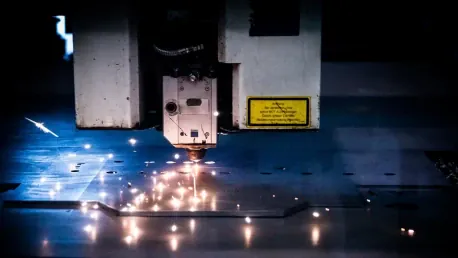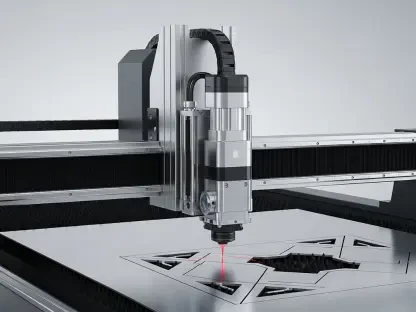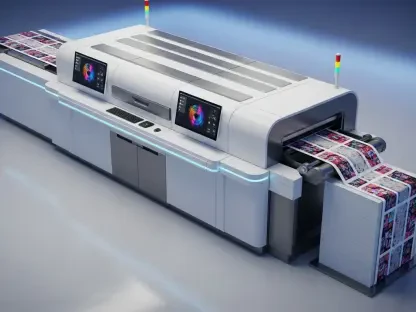Even if your machine cycle times are shorter than average, there’s no reason not to strive for efficiency. Whether you parse through your code manually or use a G-code optimizer, improving your computer numerical control (CNC) programs is among the fastest, most cost-effective ways to realize efficiency gains. G-code, or geometric code, is a programming language that guides CNC machine movements, such as commands that define motion, position, and function using alphanumeric codes. For example, G00 means rapid movement, G01 means linear feed move, and G02/G03 mean clockwise/counterclockwise feed move. Flexibility is another feature of G-code, making it useful for programming specific machining requirements. However, G-code programming requires training and time, meaning it can challenge programmers and operators and be a hurdle for improving machine-shop productivity.
Are your cycle times too long? Because the length of a job is determined by geometric complexity, material type, and project scope, your typical surface feet-per-minute metric can range anywhere from a few feet to a few hundred feet. That said, even if your cycle times are consistently above average, you likely still have room to improve. This field sees a steady stream of new CNC machines, procedures, and software. Operations with enough resources to adopt the latest tools gain a competitive advantage. They enjoy the benefits of reduced cycle times, including improved product quality and increased profitability. If your facility relies on legacy production technologies, reducing cycle times via G-code optimization is essential.
1. Automate Programming
The most straightforward way to optimize G-code for more efficient machining is to avoid programming mistakes. Syntax errors are among the most common. These can cause unplanned downtime and inaccurate cuts. For example, replacing “0” with “O” will keep the program from properly loading during operation. In the worst-case scenario, you can send bits of metal flying or damage your equipment. You could inadvertently force your spindle to drill into the table using G1 for extrusion movements instead of G0 for non-extrusion. Alternatively, accidentally having negative curvature for a non-curved cutting area could ruin your part.
Like many machining operations, your employer likely has strict cycle times. If you, like most workers, find this stressful and distracting, you are more likely to be error-prone — especially when completing precision-based work or monitoring parallel processes. Automation is ideal for efficiency optimization in these cases. It can reduce your production time per piece without sacrificing precision. Its resource savings are particularly noticeable in projects with complex geometries. With strategic improvements, you could save a great amount of time. Missing a single character could result in your machine registering 35 millimeters instead of 0.35 millimeters — an undesirable difference, to say the least. While issues like these are relatively easy to catch, you save more time eliminating them during programming than fixing them during setup or operation.
2. Use Smoothing Functions
Using smoothing functions to soften jagged geometry reduces the curvature and sharpness of segments, minimizing deceleration and jerkiness at junction points. Moreover, it reduces toolpath length, increasing your machine’s speed and shrinking cycle times. This technique is particularly beneficial when dealing with complex geometries where the toolpath includes numerous small segments. These functions can streamline transitions between different parts of the toolpath, ensuring a smoother and more continuous motion. This inherent improvement in workflow translates to substantial time savings and enhanced precision in finished products, further reinforcing the value of well-optimized G-code.
Incorporating smoothing functions requires specific adjustments in programming strategy. You need to ensure that while smoothing out geometries, the integrity and accuracy of the final product are maintained. This balance is crucial, as over-smoothing might lead to loss of vital details or dimensions in the machine parts. By using sophisticated software, you can simulate these adjustments beforehand, allowing you to foresee potential issues and correct them promptly. This proactive approach helps in maintaining high standards of production quality while significantly reducing cycle times, making smoothing functions an invaluable tool in G-code optimization efforts.
3. Utilize a G-code Optimizer
Post-processing tools like a G-code optimizer help you identify areas of opportunity. You can reduce cycle times by up to 70% with optimization software alone — even on toolpaths previously optimized by computer-aided manufacturing. These tools analyze existing G-code, highlighting inefficiencies and providing suggestions for streamlining operations. For facilities using legacy equipment, G-code optimizers serve as an intermediate solution, bridging the gap between outdated machinery and modern efficiency standards. By refining tool paths, eliminating unnecessary movements, and optimizing feed rates, G-code optimizers ensure that even older machines run more efficiently.
Implementing a G-code optimizer into your workflow involves integrating it with your existing systems and training your team on its use. This process is typically straightforward, as many optimizers offer user-friendly interfaces and comprehensive support. The initial investment in time and resources pays off through the significant efficiency gains achieved. Moreover, the insights gained from using an optimizer can inform future projects, contributing to a culture of continuous improvement. In industries where precision and speed are paramount, regularly utilizing G-code optimization tools is indispensable for maintaining a competitive edge and achieving operational excellence.
4. Minimize Your Program’s Size
While lacking CNC memory is not a problem with many modern machines, your operation still may be using legacy models. You can reduce your program’s size by using drip feeding — sending your program over a few instructions at a time. Simplifying your G-code involves making your program concise and clear. Start by stripping unessential comments and block numbers. If operations are similar, you can use subroutines and loops to avoid redundancy-related bloat. Reducing program size not only maximizes the efficiency of legacy machines but also makes program transfer and debugging faster and more manageable.
Creating a concise G-code program involves a meticulous review to remove any superfluous instructions that do not contribute to the machining process. This step requires a keen understanding of the operations and processes involved in your production to ensure that essential commands are retained while extraneous ones are eliminated. Efficient use of drip feeding is particularly advantageous for lengthy or complex programs, as it allows for continuous machine operation without memory-related interruptions, ultimately enhancing productivity and reducing downtime.
5. Test and Verify G-code
Even if your machine cycle times are shorter than average, striving for efficiency is always advantageous. Whether you manually review your code or use a G-code optimizer, enhancing your CNC programs can quickly and cost-effectively boost productivity. G-code, or geometric code, directs CNC machine movements, defining commands for motion, position, and function through alphanumeric codes. For instance, G00 signifies rapid movement, G01 indicates a linear feed move, and G02/G03 represent clockwise/counterclockwise feed moves. G-code’s flexibility allows it to cater to specific machining needs. However, programming it requires training and time, posing challenges for programmers and operators, potentially hindering machine-shop productivity improvements.
Are your cycle times too long? The duration of a job depends on geometric complexity, material type, and project scope, with surface feet-per-minute metrics ranging from a few feet to several hundred feet. Even if your cycle times are above average, there’s room for improvement. The field constantly evolves with new CNC machines, procedures, and software. Operations that adopt the latest tools benefit from shorter cycle times, enhanced product quality, and increased profitability. If your facility relies on outdated technologies, optimizing G-code is crucial for reducing cycle times and maintaining competitiveness.









